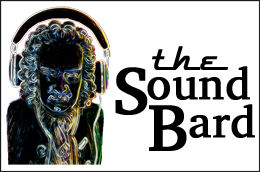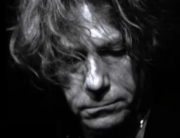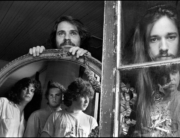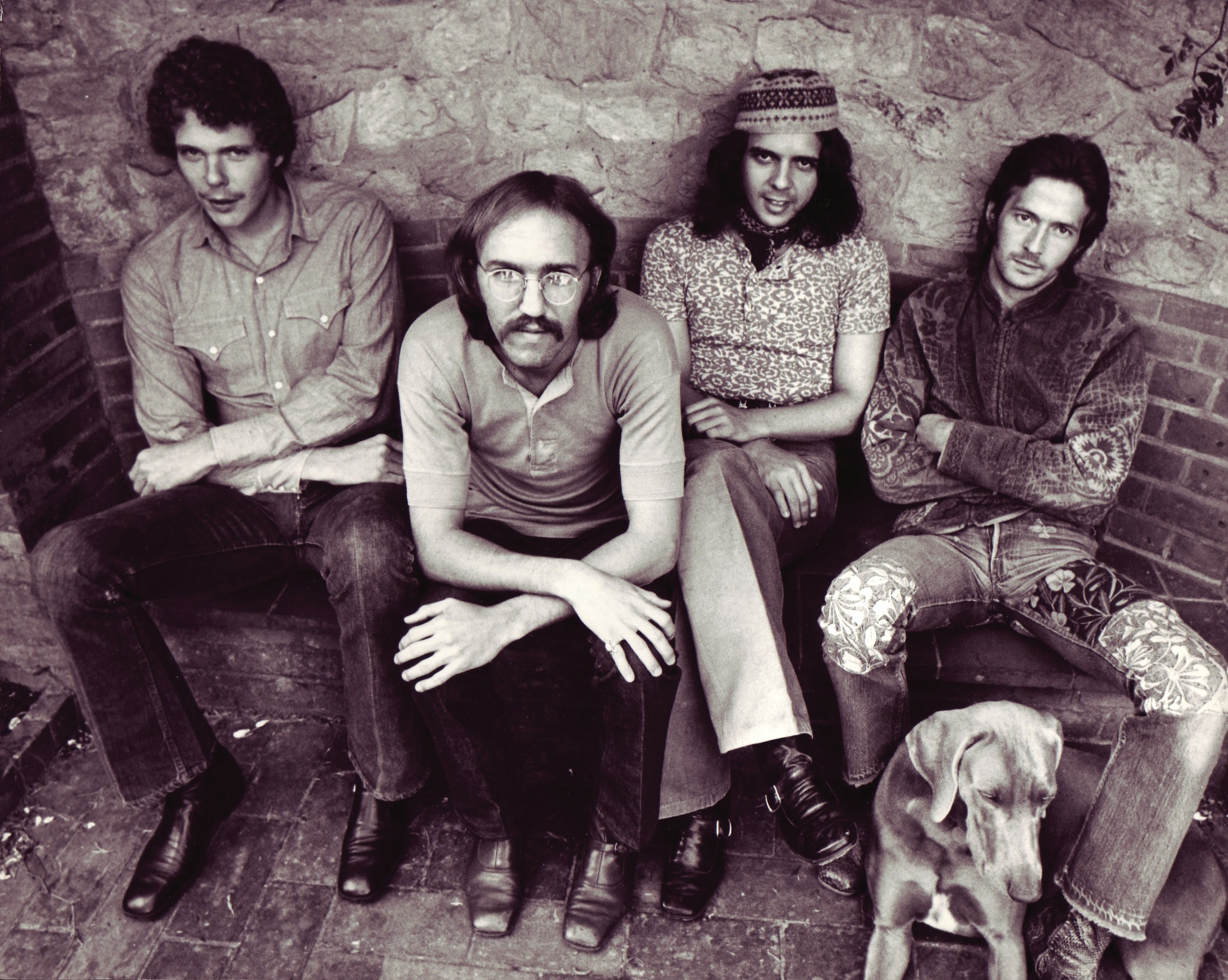BY MIKE METTLER — JANUARY 1, 2023
Whether you choose to consume your music via high-grade180-gram LPs, top-shelf streaming services, hi-res audio downloads, standard-issue CDs, and/or full-on 5.1 surround sound and/or Dolby Atmos immersive audio mixes, this past year delivered yet another wonderfully wide wave of full-length aural wonders. In reverse order, here are The SoundBard’s Top 31 long-players of 2022. Happy listening!

31. Arcade Fire: WE. Columbia. Canadian indie-rock icons Arcade Fire have wholly embraced the thematic album side approach for their sixth studio album, WE (all-caps titling very much intended). WE splits its economical 40 minutes essentially down the middle, with Side 1 (denoted as I) functioning mainly under an individualistic introspection umbrella and Side 2 (dubbed WE) operating with a much wider, all-are-welcome embrace. Co-produced by the mind-melded multi-instrumentalist husband/wife tandem of Win Butler and Régine Chassagne along with Nigel Godrich, WE synthesizes its humble New Orleans studio beginnings with broader, open-air instrumentation (a Godrich specialty). The initially minimalist opener “Age of Anxiety I” is the very definition of feeling claustrophobic, with Butler’s measured lead vocals mixed way out front and guest Josh Tillman (a.k.a. Father John Misty) providing, just as the credits state, “stomps & breaths,” usually spread to the far reaches of the soundfield. From there, Arcade Fire’s full-bore, full-stomp milieu begins to crest, especially when it’s fueling the electrifying pulse of “The Lightning II” and the ’80s dance-club mélange of “Unconditional II (Race and Religion),” the latter featuring an enmeshed vocal give-and-take between Chassagne and Peter Gabriel. WE weaves the connective sonic tissue that makes Arcade Fire music all about us and them together in a most inclusive fashion.
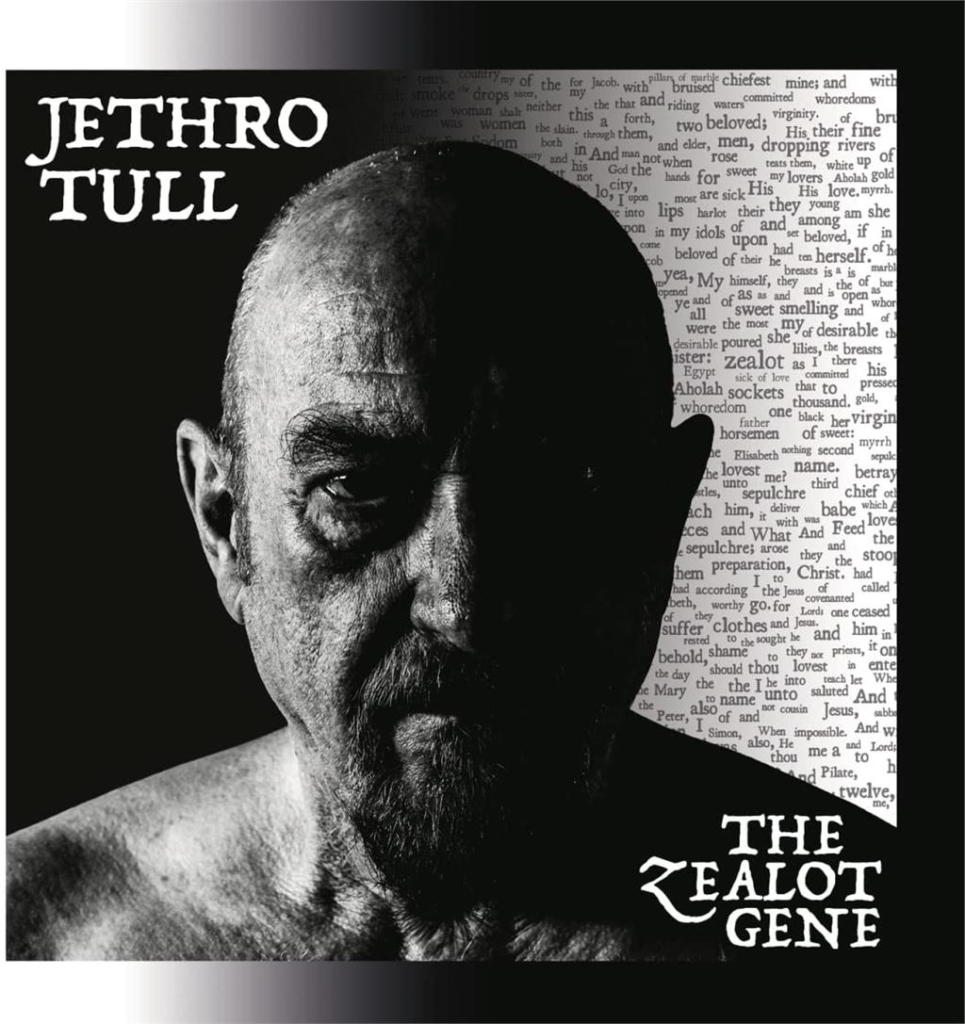
30. Jethro Tull: The Zealot Gene. InsideOut Music. Ian Anderson has never taken his foot off the creative gas when it comes to both producing new music and harvesting the wealth of catalog material from Jethro Tull, the groundbreaking prog/folk hybrid band he co-founded in 1967. That said, considering just how active an artist Anderson has been over the past six-plus decades, it might surprise you to learn the stalwart British collective’s latest release, The Zealot Gene, is in fact the first new Tull studio album in more than 19 years. The result: a heady, heavenly bouillabaisse of an even-dozen thematically intertwined songs like the whispery, flute-driven “Shoshana Sleeping,” the snarling “Barren Beth, Wild Desert John,” and the nautical reverie of “The Fisherman of Ephesus,” all of which serve to reinforce Tull’s singular recorded heritage. “The songs are written and arranged to be standalone songs. I sat down to write a collection of songs which were based on different, human, strong emotions,” Anderson told me earlier this year. “The guys who have been playing with me for an average of 15 years now have been on lots of solo albums and they’ve done hundreds and hundreds of concerts live as Jethro Tull, but they’ve never actually been on an album for something called Jethro Tull. I thought we should put that right.” The sonic and thematic contents of The Zealot Gene quite handily reclaim the family name, as it were, in turn laying down some of the fine aural DNA that will undoubtedly fuel the next all-new Tull album that’s set for release in early 2023.
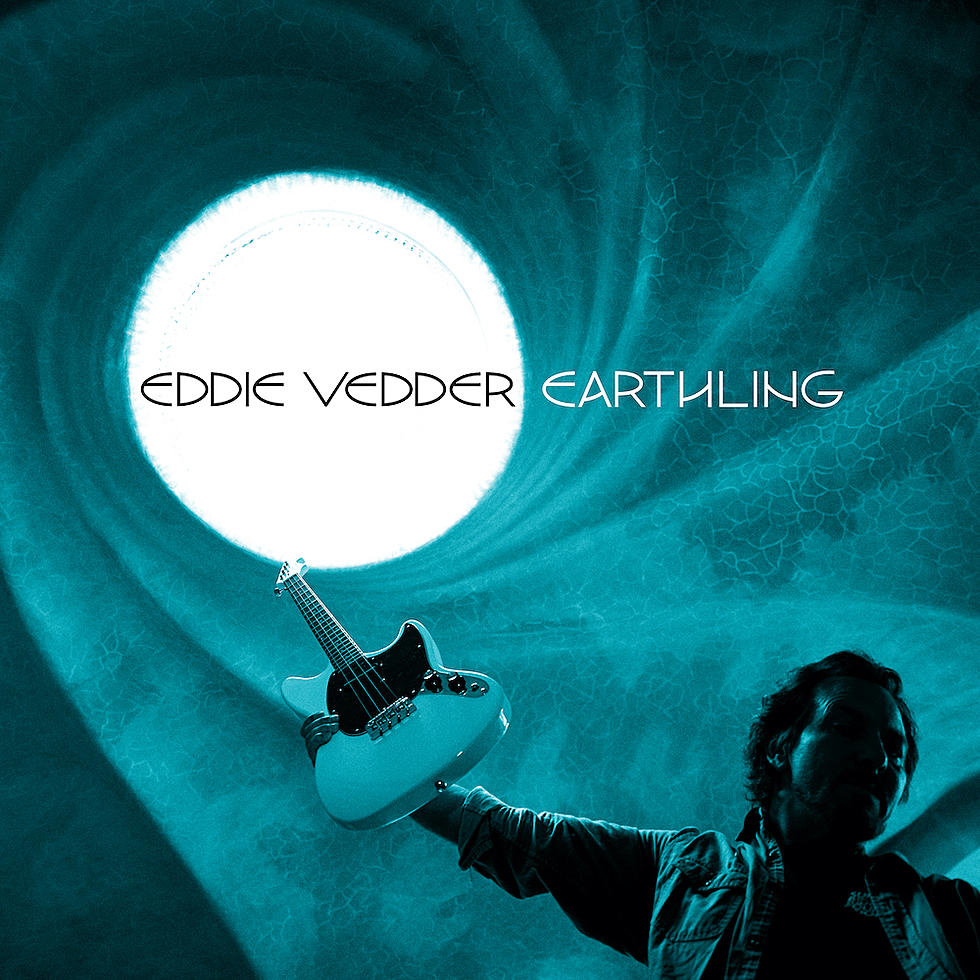
29. Eddie Vedder: Earthling. Seattle Surf/Republic. Eddie Vedder is a fount of positivity on his third full-length solo turn, Earthling. Produced by multigenre magnate Andrew Watt (Ozzy Osbourne, Miley Cyrus), Earthling showcases the range of Vedder’s strong baritone. His voice is often on the verge of exploding into wholly unleashed Pearl Jam-reminiscent wailings — see the denouement of the skyward-shooting “Brother the Cloud” and the full thrust of “Good and Evil” — but he more often than not cleanly supports the lyrical content as only the best singer/songwriters do. The reflective, dialed-back piano lullaby of “The Haves” changes the vibe mid-album, buttressed by strings and acoustic guitar. A-list guests also lend a hand and/or mouth to these earthly proceedings. The propulsive “Try” features Stevie Wonder wailing away on his harmonica like a Chicago nightclub bluesman, while the mutual lovefest “Picture” finds Elton John not only doing the initial count-in, but also providing choice honky-tonk piano lines and sharing lead vocal duties — call it “Don’t Go Breaking My Better Man’s Heart.” The pastoral “Mrs. Mills” is a pip thanks to the quite Beatlesque string section and horn accents, all skillfully supported with Ringo Starr’s drum flourishes via, well, the most Ringo way possible. Earthling verifies Vedder has his best creative intentions firmly planted on terra firma.

28. Hoodoo Gurus: Chariot of the Gods. Big Time/EMI. Veteran Australian garage-punk iconoclasts Hoodoo Gurus come out with their guns and guitars all ablaze on Chariot of the Gods, their tenth studio album and first full-lengther in 12 years. The ostensible outliers lament “Get Out of Dodge” finds guitarist/vocalist Dave Faulkner and friends hitting all the high harmonies together on the choruses, albeit replete with some fine barrelhouse piano runs slightly back in the mix on the verses and buttressed by a twang-tastic guitar solo to boot. The sci-fi parable title track resides on a foreboding tribal percussive bed, with snarling guitars and burbling keyboard stabs all-aswirl throughout the soundfield to chronicle an alien invasion gone awry. (“Mars Needs Guitars,” anyone?) The CD-closing “Got to Get You Out of My Life” comes across like a lost Velvet Underground treatise circa Loaded, wherein Faulkner-cum-Lou Reed tackles the seedier underbelly of a McCartneyesque Beatles-era pop confection with one key phraseology difference in the song title. The limited edition 180-gram double blue vinyl version of Chariot adds three wax-exclusive tracks, including a pair of vintage Dylan and Stones covers plus “Hung Out to Dry,” a sneering kiss-off of a cautionary tale. However you choose to receive their message, these Gurus prescribe a most welcome sonic elixir fit for the Gods.
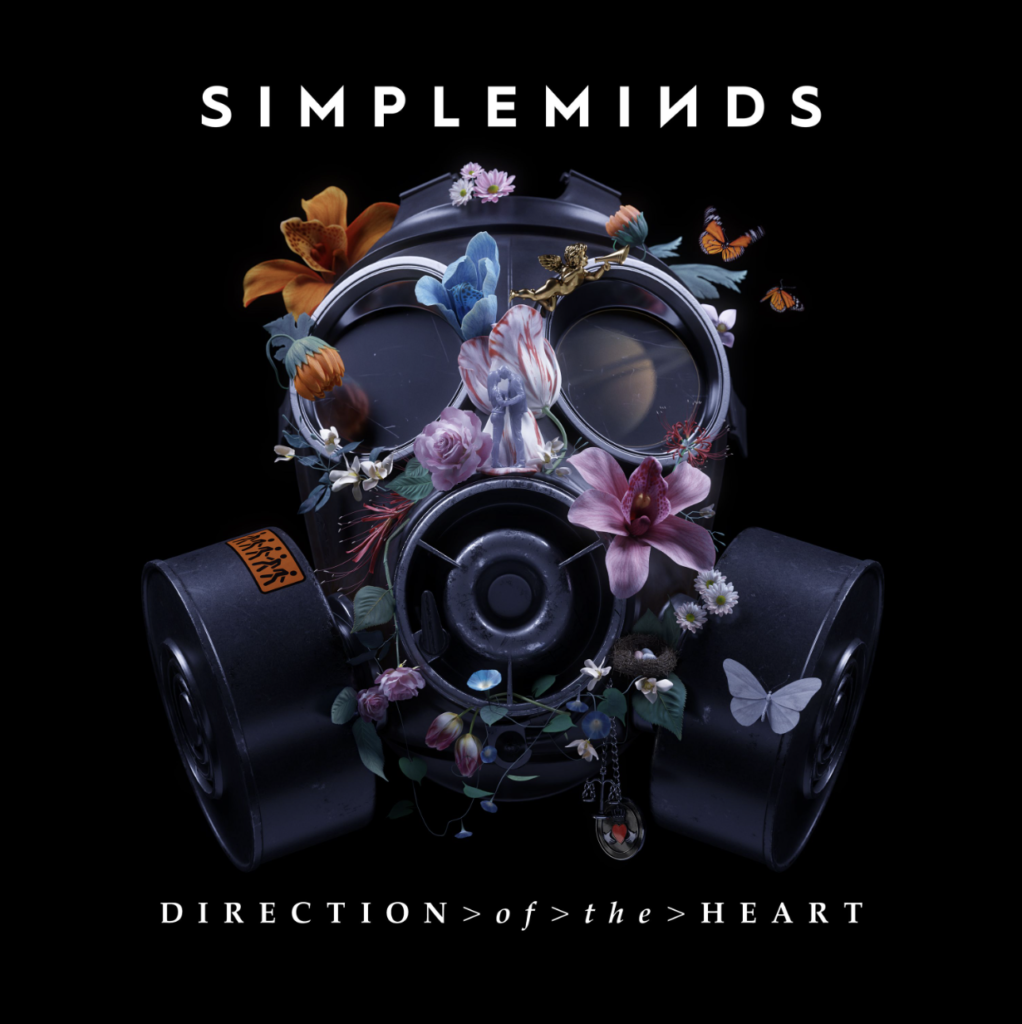
27. Simple Minds. Direction of the Heart. BMG. Scotland’s favorite sons Simple Minds continue to connect with their decades-ingrained muse on their 19th studio album Direction of the Heart, another fine blend of instantly hummable melodies, layered harmony vocals, and endless positivity. From the laser-focused outlook of album opener “Vision Thing” to the “Belfast Child”-like Celtic overtones mixed with the skybound ethereality of “Solstice Kiss,” Simple Minds consistently paint vivid pictures with their music in ways few other veteran world-renowned acts can match. “You can’t completely go back to the past, but you can evoke it, and you can connect that kind of feeling we had when we were 19 and 20 years old,” vocalist Jim Kerr told me back in late August. “It’s a different world now. We know too much, almost — and I don’t say that in a bad way. There’s an idealism that comes into it, and I think if we can conjure up the essence of those early art-rock days — but do it with more focused songwriting that comes through experience — and then get that all together on an album, it’s not a bad combination.” Simple Minds are locked into combining the best ways of celebrating the vibrant pulse of their collective beating hearts within the very fabric of their music, with our own ears and souls emerging as the ultimate winners.
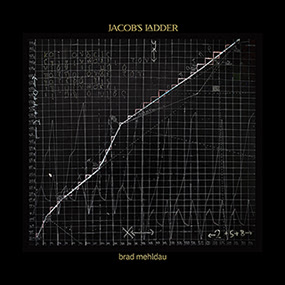
26. Brad Mehldau: Jacob’s Ladder. Nonesuch. Given the breadth of Brad Mehldau’s compositional chops, his multi-genre musical explorations are often genre-defying and cerebrally challenging in all the right ways. With Jacob’s Ladder, Mehldau’s enmeshed muse mutually examines his fervor for interpreting scripture alongside his lifelong love of progressive rock. “Maybe as His Skies Are Wide” sets the sonic table, its title borrowed from the last line of the fourth verse of Rush’s seminal 1981 prog-rock gauntlet-crusher, “Tom Sawyer.” Luca van den Bossche’s soothing title-phrase repetition is lifted into the ether, her treble vocce looped together in round fashion while backed by pent-up percussion and Mehldau’s initially minimalist piano chordings. Six tracks later, “Tom Sawyer” gets its own full-on reading, with Mehldau and frequent collaborator vocalist/mandolinist Chris Thile tackling the song’s structure template fairly reverentially — with van den Bossche’s recurring refrains duly in tow — before transmogrifying the original’s gnarly guitar solo into a much more synth-laden, sax-charged, and mandolin-infused section. The three-part title track is an avant-jazz extrapolation of another acknowledged Rush classic. Meanwhile, the Moog-drenched and soprano saxophone-driven Mehldau concoction “Herr and Knecht” reinforces the tenet that fusion is alive and well in the 21st century — albeit located at the three-way intersection of Weather Report Lane, Amon Düül II Avenue, and King Crimson Court.
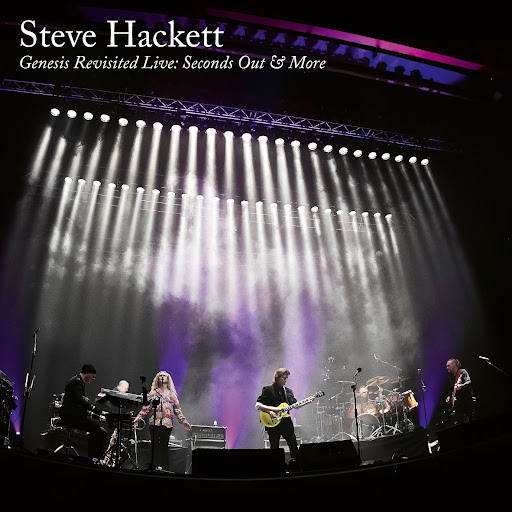
25. Steve Hackett. Genesis Revisited Live: Seconds Out & More. InsideOut Music. As the title of this stellar 4LP/2CD set suggests, guitar iconoclast Steve Hackett revisits all 12 songs on his former band Genesis’ iconic October 1977 double live set Seconds Out with much aplomb, in addition to two full sides comprised of his own solo offerings. (Spoiler alert: Far-reaching solo tracks like “The Devil’s Cathedral” are just as adventurous as that core Genesis material is.) “There were many years where I didn’t play certain songs because I was trying to re-establish myself as separate and distinct from Genesis,” Hackett told me back in September. “But to embrace one’s past, and to keep the legacy of those songs alive, is something that has got the sanction of [Genesis keyboardist] Tony Banks. Tony said to me, ‘You’re keeping the legacy alive by doing this stuff.’” One of the best examples of that approved directive is the Revisited version of “Cinema Show,” which displays a level of clarity and a dramatic orchestral buildup feel to it that takes the core tenets of this perennial Genesis classic upwards into the next stratosphere. “Chorally, and orchestrally, it’s got those dynamics — something that starts not from a whisper, but a little tinkle,” Hackett explains. “Something that might start almost apologetically, and in an introverted sense, goes from the personal to being as universal as we could make it.” Once again, Hackett has his always nimble fingers on the pulse of what made Genesis so great during their 1970s heyday, and he brings it all to renewed life with each successive multidisc live Revisited release.

24. ZZ Top: RAW – That Little Ol’ Band From Texas’ Original Soundtrack. Tower Top Tours, Inc./BMG. As the album title suggests, RAW was born and bred from an intimate performance that took place in the June 2019 ZZ Top documentary, That Little Ol’ Band From Texas. As it stands, RAW is likely to be the last ZZ Top recording to feature original bassist Dusty Hill, who passed away at age 72 a little more than a year ago on July 28, 2021. (The band continues to soldier ever onward with Dusty’s blessing, with longtime bass tech Elwood Francis taking his place.) Cut live off the floor in the close quarters of an old-school honky-tonk known as Gruene Hall in New Braunfels, Texas, RAW captures the essence of a three-man band whose performance intuition has been honed to a fine T-bone, thanks to 50-plus years of playing together. The sonic evidence can be found within the gutbucket blues of “Brown Sugar,” the gnarly haw-haw tones of “La Grange,” and the wink-nudge snarl of “Tube Snake Boogie,” classics all. “Unexpectedly, we were thrust into an environment that was not unlike the confines of when we started in the early days — not only playing live in small joints, but the recording studio that captured our first couple of records,” guitarist/vocalist Billy F Gibbons told me back in June. “Gruene Hall was not a giant room. We were within reach of each other, and it was quite a delight to be back doing it early-style. Being in such an environment, I think, emotionally brought us back to the way we started. And you can’t forget anything that never left.” Any way you slice it, RAW is as real as it gets.

23. Joan Osborne: Radio Waves. Womanly Hips. Joan Osborne is a standards bearer, plural. While she is indeed a consummate original content generator — as witnessed by her deeply personal September 2020 treatise, Trouble and Strife — her world-class interpretive skills answer the question, “If Janis Joplin had lived, who would be amongst her contemporary vocal peers?” Radio Waves is a 13-track amalgamation of Osborne’s favorite radio station performances and demos, an aural tasting menu personally curated with the care of an expert oenophile. Her mandolin-driven “Saint Teresa” 1995 KCRW appearance sets the table with chilling fervor — note how the strained, extra-syllabic enunciation of “hollow” speaks a thousand unholy words — while a sultry, electrified 2012 WXPK take on The Rolling Stones’ “Shake Your Hips” builds to multiple climaxes. The 2001 Dutch Radio acoustic read on “One of Us” boils this signature song down to its heavenly essence (“yeah, yeah”), and the yearning spin on Bob Dylan’s “Make You Feel My Love” from 2002 via Radio Bremen, Germany reinforces her mastery of the Bard’s catalog. Fact is, Osborne could sing every name in a digitized phone book with unabashed, gut-wrenching emotion, and it would be much more enthralling than most modern songstress offerings. Turn on her Radio to ride the crest of Osborne’s peak airwave performances.
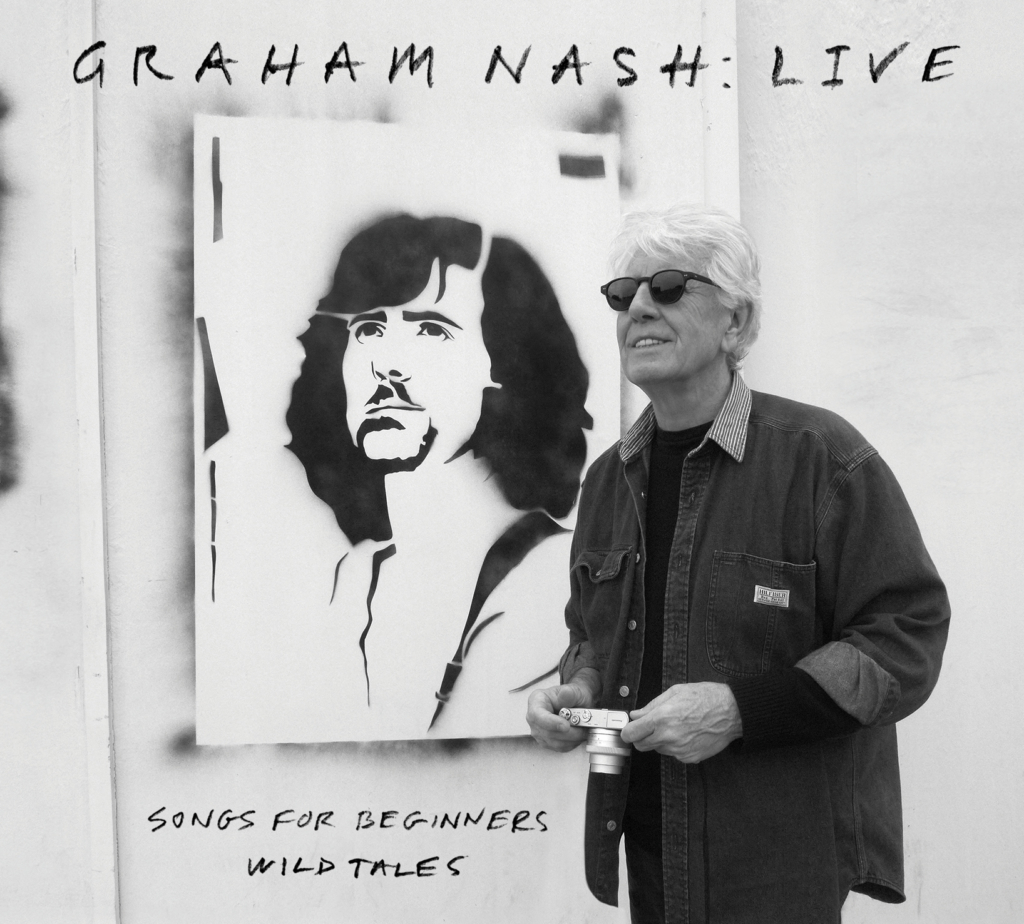
22. Graham Nash: Live – Songs for Beginners Wild Tales. Proper Records. Live’s content is culled from various stops on Graham Nash’s September 2019 tour in the Northeastern quadrant of the U.S., during which he and his ace band played all 20 songs that comprise his first two solo albums — May 1971’s Songs for Beginners and January 1974’s Wild Tales — and they appear here in their respective full running orders to boot, each contained to one disc apiece to mirror the original album’s side breaks. Audience chatter and ambient live noise are mostly absent save mainly for applause, as the goal for Live was to preserve and respect the integrity of the natural flow of the original recordings rather than turn the proceedings into, well, a hootenanny of sorts. Between the two discs, we get the true balance of the light and the dark sides of Graham Nash, with Beginners bearing the light (“We Can Change the World”), and Tales serving the dark (“Grave Concern”). “I want my listeners to know I’m going to sing these songs with the same bloody passion I had when I wrote them,” Nash told me back in April. “My audience deserve that — they deserve the best of me. And that’s what I’m always trying to present — the best of my songs sung and played the best way I can. All of us, right now, are out there going through all the changes I write about. And I realize, if it’s happening to me, there’s a good chance it’s happening to you.” Sixty-plus years into his unmatched career, Graham Nash is as in tune with his muse and his audience as any artist you’ll ever hear.
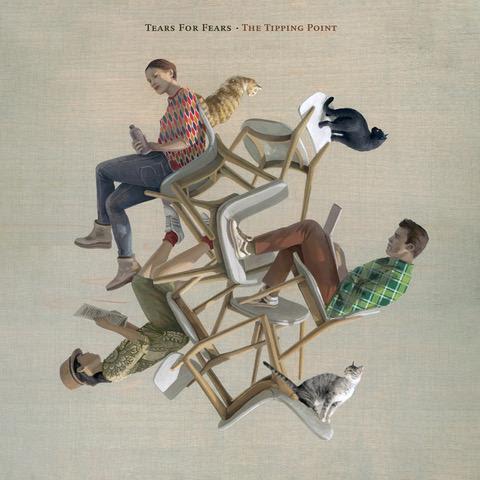
21. Tears For Fears: The Tipping Point. Concord. For four decades and counting, Tears For Fears have analyzed our respective states of mind, one emotion at a time — all the while ensuring the music delineating every feeling evolves right alongside each dial-turn of our ever-changing moods. The Tipping Point, TFF’s first studio album in 18 years — and only seventh overall — continues to pull the truth curtain back on the lives led by the band’s perpetual yin-yang partnership, guitarist/vocalist Roland Orzabal and bassist/vocalist Curt Smith. The acoustic opener “No Small Thing,” Orzabal’s world-wizened folkie reverie, is bolstered by supportive Hammond organ, tambourine, and accordion accents — reinforcing TFF’s instinctual meshing with co-producer Charlton Pettus — while the time-signature shifts in the Smith-steered soul-searching dirge “Long, Long, Long Time” add weight to an ode for turning self-imposed stasis into accelerated action. The Demolition Man-esque staccato crunch of “My Demons” follows Orzabal’s descent into disintegration, from metronomic whisper to full-on blood embroiling. Finally, Smith’s vocal-echo warble on the smoky, stripped-down album closer “Stay” serves as a clear-eyed testament to someone who’s slipping away — whether they be a life partner, or a creative one. Tears For Fears remain aces-high at recounting everything that happens once “happily ever after” gets ripped away, to the literal Point of all-knowing return.
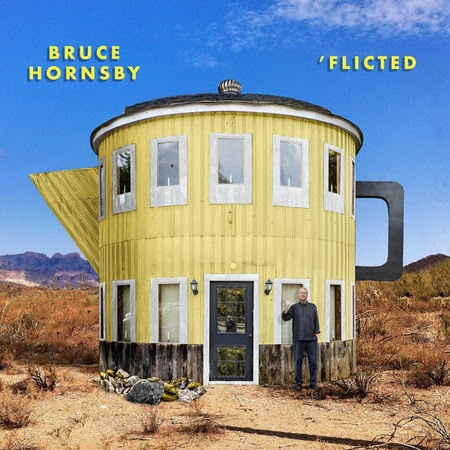
20. Bruce Hornsby: ’Flicted. Zappo Productions/Thirty Tigers. On ’Flicted, piano maestro Bruce Hornsby’s talents as an envelope-pushing artist, forward-thinking songwriter, and instinctual improviser reach much, much deeper than the radio-friendly songs of his that shared much airwave space on the AM/FM dials back in the day. This album swings mightily in its breadth of musicality — a hallmark of Hornsby’s latter-day output, truth be told — from the experimental round-with-a-twist approach to “Sidelines” to the burbling EDM thrust of “Maybe Now” to the emotional orchestral reveries of “Simple Prayer II.” ’Flicted also features key guest turns from the likes of Ezra Koenig of Vampire Weekend, Danielle Haim of Haim, vocalist Z Berg, and noted chamber ensemble yMusic. In effect, ’Flicted completes an album trilogy of sorts, acting as the third platter following April 2019’s Absolute Zero and August 2020’s Non-Secure Connection. Speaking of guests, jazz drumming legend Jack DeJohnette makes an appearance on Flicted’s final track, “Point Omega,” which swings in all the right ways you’d expect, replete with a string orchestra and Hornsby’s brief opening scat lines and finely doubled vocals — in effect, it’s the perfect bookend to the title track of the aforementioned Absolute Zero. “I’m a bit of a restless soul, and I’m interested in trying new ways and new approaches to things,” Hornsby told me back in April. “Look, I’m a lifelong student, in every way. I’m always working on my instrument. I’m deeply involved in, and still interested in, virtuosity on the instruments I play. I work on that, and I’m always looking to improve in every way — as a songwriter, broadening my range stylistically, and vocally too.” ’Flicted is a prime example of an artist unafraid to test his limits, then continue pushing beyond them to even greater success.

19. Collective Soul: Vibrating. Fuzze-Flex. Vibrating positively pulsates with the boundless energy that has been Collective Soul’s calling card for going on three full decades. Actually, the template that realigned the rock quintet’s creative compass was 2015’s See What You Started by Continuing, which served as the reset blueprint for how a revamped and revitalized five-man lineup fully gels as a unit, while 2019’s Blood was the ensuing coagulant further infused by an in-tune rock ensemble clearly firing on all corpuscles. Vibrating is the next vibrant piece of the sonic puzzle. From the propulsively gnarly kiss-off of “Cut the Cord” to the reflective midtempo jangle of “Take” to the heart-wrenching reality check of “Rule #1” — replete with a soaring string section — to the choir-backed emotional crossroads of “Where Do I Go,” Vibrating contains 42 minutes of irrefutable aural evidence of a band wholly uninterested in sitting still. “I think we’re on a roll,” vocalist/guitarist Ed Roland told me back in March. “We’re not afraid to stretch the boundaries — but we do know how to stay in our lane when we need to. Sometimes, though, we just have to go faster. You know, people ask me if I have a hobby — but for me, it’s just music. I mean, I don’t know what else to do, because that’s what I love to do. I live in the studio. I just love the creation of music, and the process of finding out what’s gonna happen with it next. That kinda defines it all for me.” The many identity-defining good vibrations embedded within the deep-rooted grooves of Vibrating all serve to send Collective Soul’s artistic spirit into the next stratosphere.
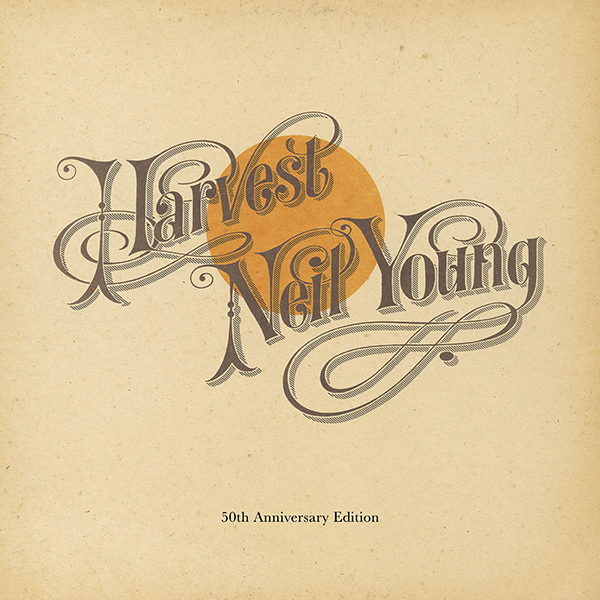
18. Neil Young: Harvest – 50th Anniversary Deluxe Edition. Reprise. A man needs to harvest a heart of gold, and Neil Young’s groundbreaking February 1972 album Harvest provides all the aural goods to do just that. Yes, I just mashed up a few album titles there, but you get the point. To wit: This new, and very much vital, box set — available in both 2LP/1EP/2DVD and 3CD/2DVD form — celebrates the 50th anniversary of Harvest and includes the original album, plus a fine collective of unreleased of-era live BBC solo performances (the latter via both audio and video options), and a trio of unreleased Harvest outtakes — in effect, it’s a literal cornucopia of essential music from one of Young’s most fertile and creative single-year periods. You can see it all unfold from the inside via the two-hour Harvest Time documentary on DVD, about as you-are-there perfect as a doc can get. I should also mention Neil’s other 2022 releases as an inclusively worthy subset here — namely, a trio of archival, acoustic-oriented live albums, Dorothy Chandler Pavilion 1971, Royce Hall 1971, and Citizen Kane Jr. Blues (all released simultaneously in May); Neil Young With Crazy Horse’s 2LP set initially recorded in 2000-01, Toast (released in July); Neil Young + Promise of The Real’s 2LP live set Noise & Flowers (released in August); and, most recently, a brand new, balls-out-rocking Neil Young With Crazy Horse 2LP set, World Record, which was cut live and mixed to analog tape at Shangri-La Studios (released in November). A career artist from stem to stern, Neil Young continues to harvest all his songwriting gifts with each and every historical collection he chooses to share with us, the ultimate result being we get to reap eternally bountiful listening rewards.
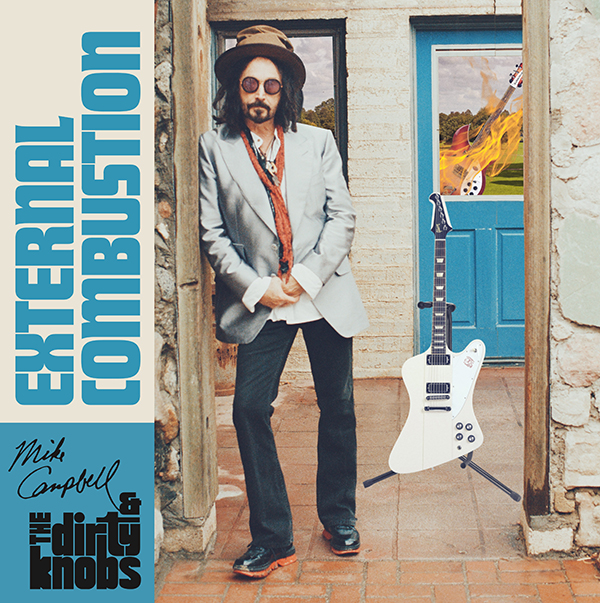
17. Mike Campbell & The Dirty Knobs: External Combustion. BMG. Mike Campbell, the consummate sideman, is now fully embracing his role as the frontman and bandleader of The Dirty Knobs, the long-running sideproject/band of his that has become his primary creative focus since the unfortunate passing of his lifelong friend and Heartbreakers/Mudcrutch bandmate Tom Petty in October 2017. External Combustion, Mike Campbell & The Dirty Knobs’ second album, builds on the template of promise established on The Knobs’ first release, November 2020’s Wreckless Abandon. Deep-grooving Combustion cuts like “Lightning Boogie” (which features Mike’s Heartbreakers bandmate Benmont Tench on piano), the grimy thrust of “Rat City,” the emotional bent of “In This Lifetime,” and the atmospheric caress of “It Is Written” all make it clear the goals of Campbell the songwriter and Campbell the performer have intersected in all the right ways. “First of all, I wanted to have fun,” Campbell told me back in February. “And second of all, we wanted to sound like a live band in the studio — which is what we did. All the tracks are pretty much live with some live vocals, and all the guitar solos pretty much are live on the floor. We just put a good vibe in the room, so everybody had fun. Volume is — well, your gain structure is really the key to your sound. Between the volume on the guitar, which is almost always all the way up but not always; sometimes you back it off, and if you have a pedal or an amp — anything in between — all those gain structures have to be in the sweet spot for it to sound right.” The more Combustion like this we can get harnessed from these Knobs, the merrier.
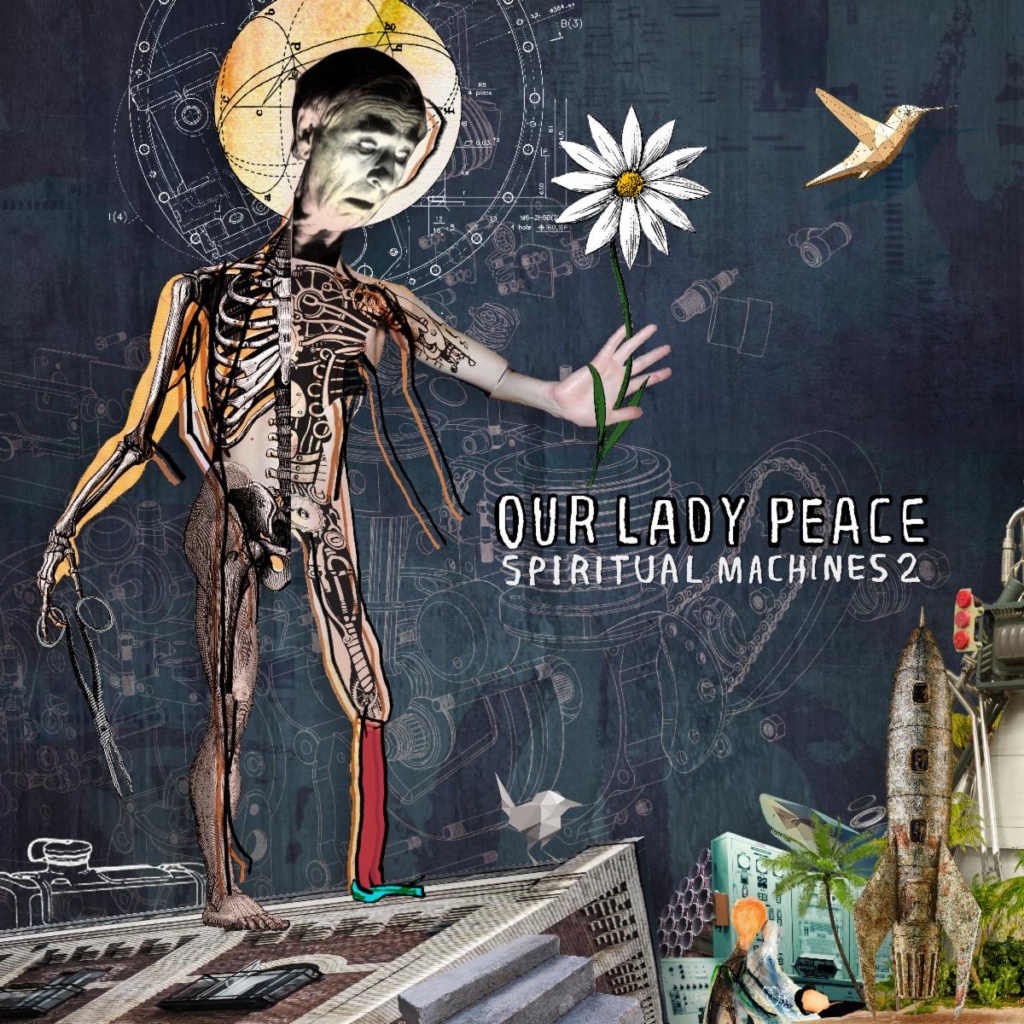
16. Our Lady Peace: Spiritual Machines 2. Shelter. Canadian alt-rock stalwarts Our Lady Peace were literally two decades ahead of their time with 2000’s quite prophetic Spiritual Machines, an anthemic song collective that tipped over the edge of the century by springboarding from the “Wonderful Future” projections of iconoclast inventor Raymond Kurzweil. And now, 21 years later, OLP make their prescience known yet again with the funkified Spiritual Machines 2, interspersing additional Kurzweillian predictive soundbites amidst much more adventurous sonic territory. Produced mainly by Dave Sitek (TV on the Radio), Machines 2 expands the band’s topography to better convey the potential intersection of lofty utopian concepts with an alternate dystopian trajectory. “Stop Making Stupid People Famous” (a.k.a. #besthashtagever) features an irresistible dancefloor beat fortified by a jangling guitar hook and guest Russian upstarts Pussy Riot testifying on one of the verses. Lead vocalist Raine Maida isn’t afraid to go all-out with his waver-warble expressiveness — he has an Adam Levine-caliber lungset, albeit with deeper gravitas — as evidenced by the falsetto intro to “Simulation” and the reconciled lament of “Wish You Well.” Add in the tribal U2 atmospherics of “The Message,” and you get a guardedly optimistic tiptoe through the A.I. tulips that just might lead us all to a most necessary Spiritual healing.
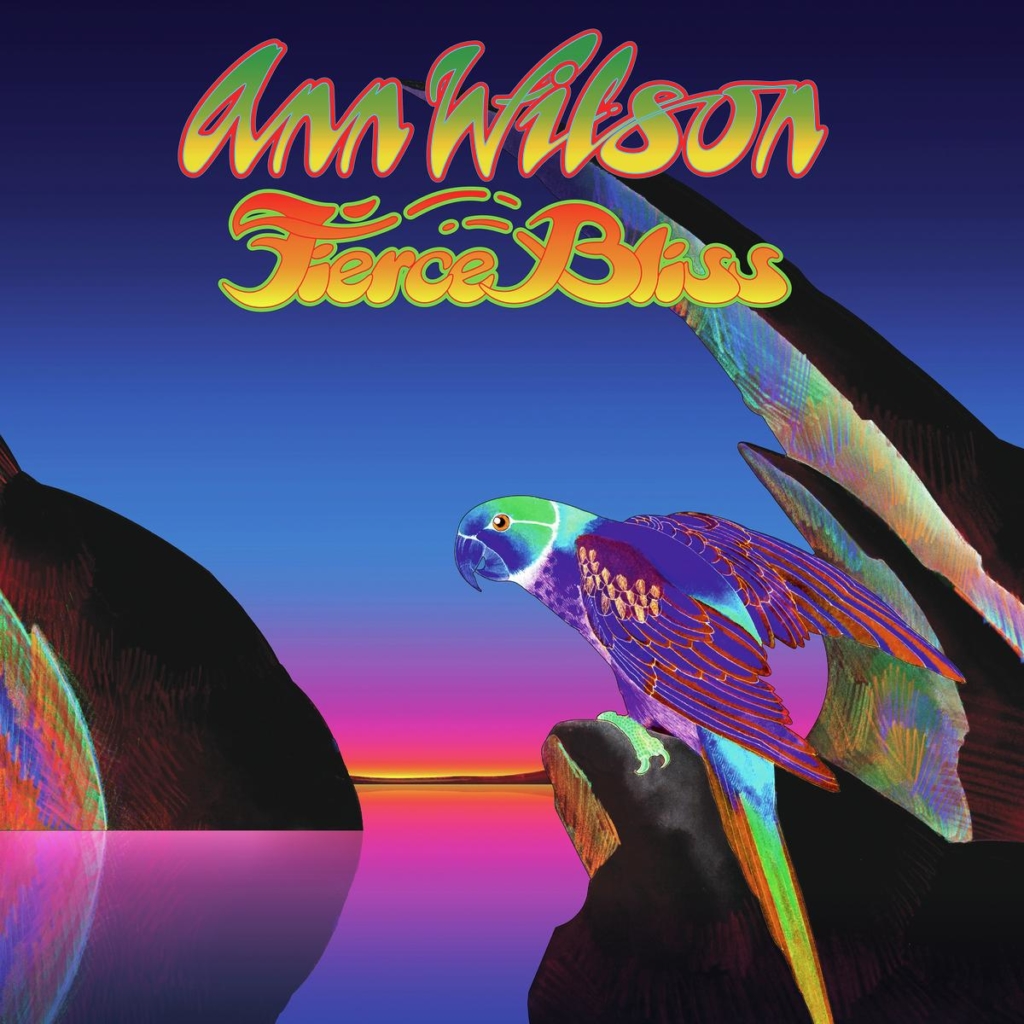
15. Ann Wilson: Fierce Bliss. Silver Lining Music. Ann Wilson sure knows from personal, considering how deeply affecting Fierce Bliss is. It’s her third full-length solo album outside of Heart, the pioneering rock band she fronts alongside her super-talented sister, ace guitarist/vocalist Nancy Wilson. Bliss is awash with a fine 11-track blend of originals and covers — a Wilson forte, truth be told — from her and co-author Dan Walker’s foreboding, evocative “Black Wing” to her and Warren Haynes’ staunch, slow-rising “Gladiator,” not to mention her touching duet with Vince Gill on Queen’s “Love of My Life” and an absolutely stirring take on Jeff Buckley’s “Forget Her.” Two key lines from “As the World Turns,” the final track on the album — “I’m over here / You’re over there” — speak not only to the scores of challenges musicians had to face while figuring out how to record music together during the pandemic, but also to the level of disconnection many people continue to struggle with when it comes to navigating the modern world in general. “When you can wrestle down a song that’s universal like that one is — one that has that many colors to it — it will affect you in different ways, depending on what’s going on in your life,” Wilson told me back in March. “Joni Mitchell is a master of that. She wrote songs that were so intensely personal, you couldn’t not apply them to yourself.” Blue pot meet silver kettle, to re-coin a phrase. Simply put, Fierce Bliss is on fire with both passion and compassion.
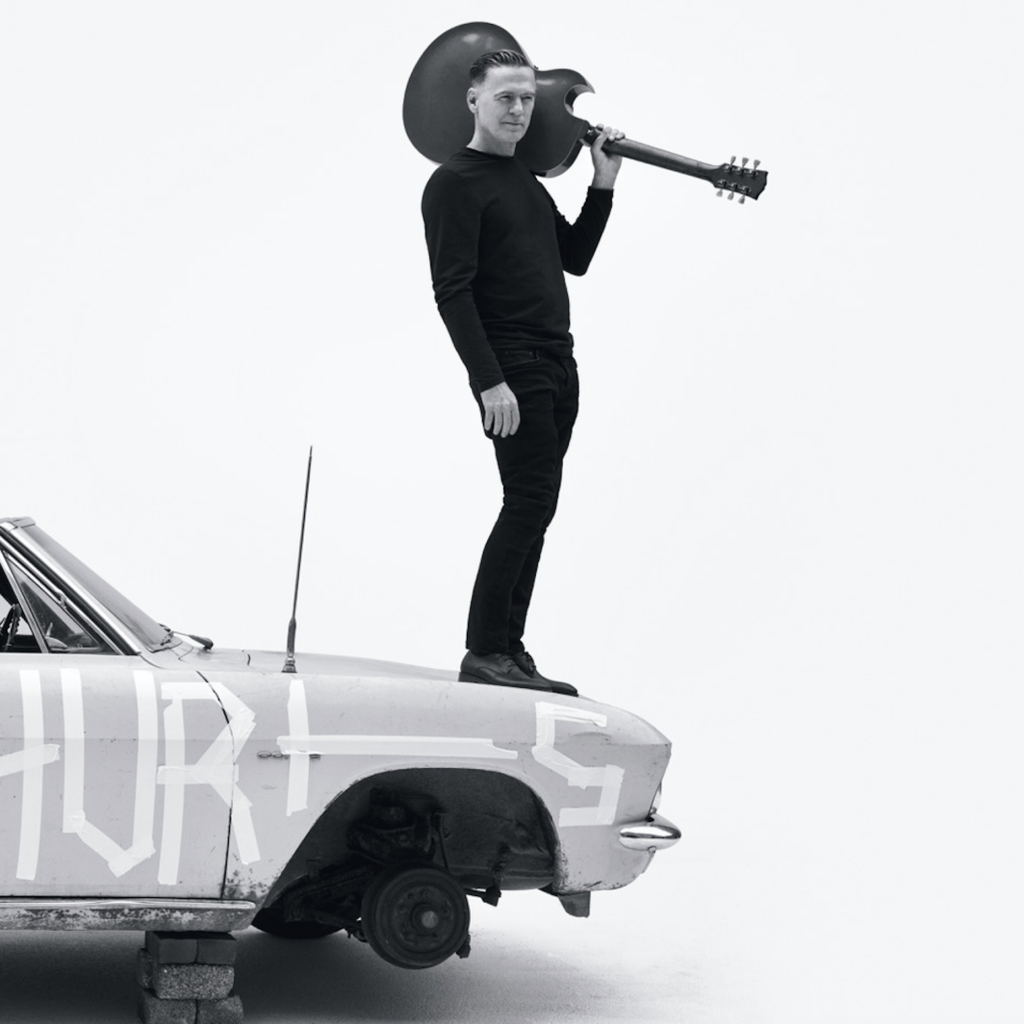
14. Bryan Adams: So Happy It Hurts. BMG. Bryan Adams is a consummate and restless performer, so when the lockdown happened, he got right down to work in his home studio to keep himself busy before he could get back out on the road again. Not only did he come up with a stellar album of all-new material — So Happy It Hurts — he also took a long, hard look at the four-plus decades of his recording career and decided to recut many of his favorite tracks himself under the umbrella of Classic. “With each one of these songs, I was quite meticulous about how they were put together because I wanted to be faithful to the originals,” Adams told me back in September, “but I wanted them to sound like they could still work today and upgrade them in some level so they’re true to how we perform them now.” If anything, Classic also proves Adams’ is a heretofore unshared intuitive drummer in the vein of Jeff Lynne (ELO) and Steve Ferrone (Tom Petty and The Heartbreakers). Meanwhile, when it comes to Hurts, hard-driving singalong cuts like “Kick Ass” (with a guest vocal turn from, yes, John Cleese of Monty Python fame) and “Ain’t Worth Sh– Without You” continue to reinforce Adams’ inherent knack for marrying melody and lyrical panache. “What I was doing was creating a song from the ground up each time, with no particular ambition other than just to make songs — and make them as rocking as possible,” Adams confirmed to me firsthand. When it comes to Adams’ continual mastery of that forever-classic kids-wanna-rock style, it all just Hurts so good.
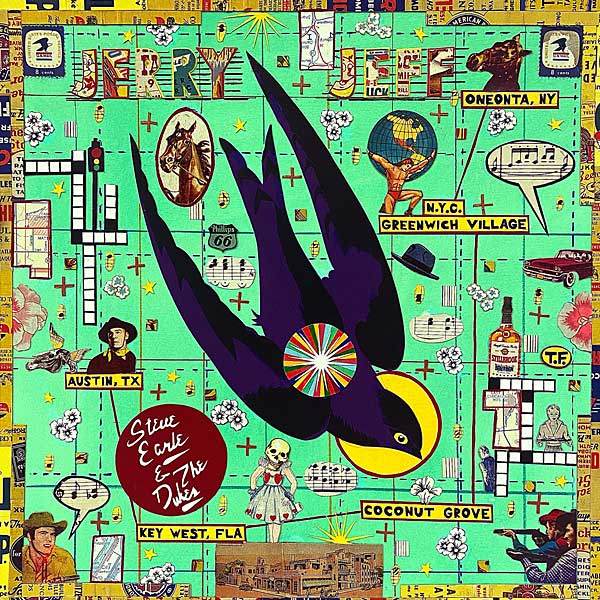
13. Steve Earle & The Dukes: Jerry Jeff. New West. Each facet of Steve Earle’s rough-hewn, hardcore troubadour DNA can be found within his latest ten-song interpretive collection, Jerry Jeff, which pays homage to one more of his Lone Star State outlaw singer/songwriter heroes, the late, great Jerry Jeff Walker (who passed away from cancer at age 78, in October 2020). This album, in turn, completes the final corner of releases feting Earle’s holy trinity — Townes Van Zandt (May 2009’s Townes) and Guy Clark (March 2019’s Guy) being the other two. When I spoke with Earle back in May and told him I felt he was deferring to Walker’s vocal style in a welcoming and most reverential way all throughout Jerry Jeff, his reply was immediate, and quite animated. “Yes, it was because I was trying to be Jerry Jeff Walker!” he exclaimed. “He’s part of who I am as a performer. I emulated Jerry Jeff Walker much more than Guy Clark or Townes. Now, I can do Townes’ guitar style better than probably anybody alive and I have Guy down pretty well too, but Jerry Jeff — well, I was trying to be Jerry Jeff Walker before I even met him.” All you need do to confirm that statement is cue up Earle’s clear-eyed, gripping, and gritty versions of “Gettin’ By,” “Mr. Bojangles,” and “Wheel” to hear just how spot-on he is as a frontline Walker acolyte. The years Earle spent sweating beer and slinging chords in countless honky-tonks across the land have clearly paid off on Jerry Jeff, further cementing Earle’s reputation as being none of our most cherished, inveterately creative interpretive artists.
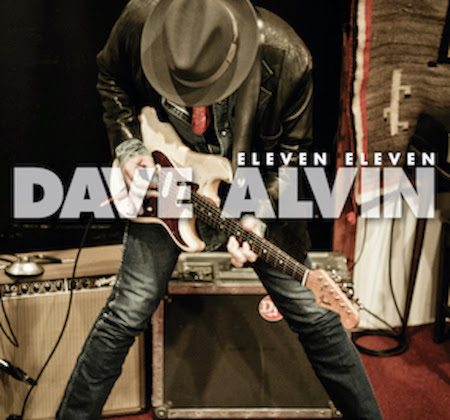
12. Dave Alvin: Eleven Eleven – 11th Anniversary Expanded Edition. Yep Roc. Dave Alvin is a fighter. Not only did he tussle heroically between the notes when he was sparring in a fraternally creative way with his brother Dave Alvin in the L.A. punkabilly upstarts known as The Blasters back in the ’80s — as well as within some of their latter-day duo collaborations — but Alvin literally has also had to fight for his own life in recent years, having successfully battled cancer into a state of remission (at least for now). Constantly residing underneath the sword of Damocles fueled Alvin into fervent musical explorations that both look forward and back at the same time, exemplified by his recent shepherding of a newly resequenced special edition of his November 11, 2011 effort, Eleven Eleven, released on, of course, November 11, 2022. (Why the deliberate follow-through on the clever 11/11 symmetry, you ask? For one thing, it also happens to be Alvin’s birthday.) Whether it’s the stark narrative nature of the haunting opening track “Harlan County Line,” the doom-foretold resonance of “Johnny Ace Is Dead,” or the picturesque swell of the bonus track “Beautiful City ’Cross the River,” Alvin shows he’s fully dialed into the sonic amalgamation between his country/folk/blues/rock roots. “I’m still learning,” Alvin told me back in October. (Full interview coming soon, btw.) “The only thing I can do is make records where I try to be competitive sonically. If my record comes on after, say, a Pink Floyd record, it doesn’t sound out of place. I can’t beat Pink Floyd sonically, but I can at least try to stand head and shoulders with them. You never know what people are gonna like, but I do feel like I’ve written a few songs that don’t have a cultural expiration date.” The revised and refreshed expanded grooves of Eleven Eleven prove Alvin and his vital music ain’t going anywhere anytime soon.
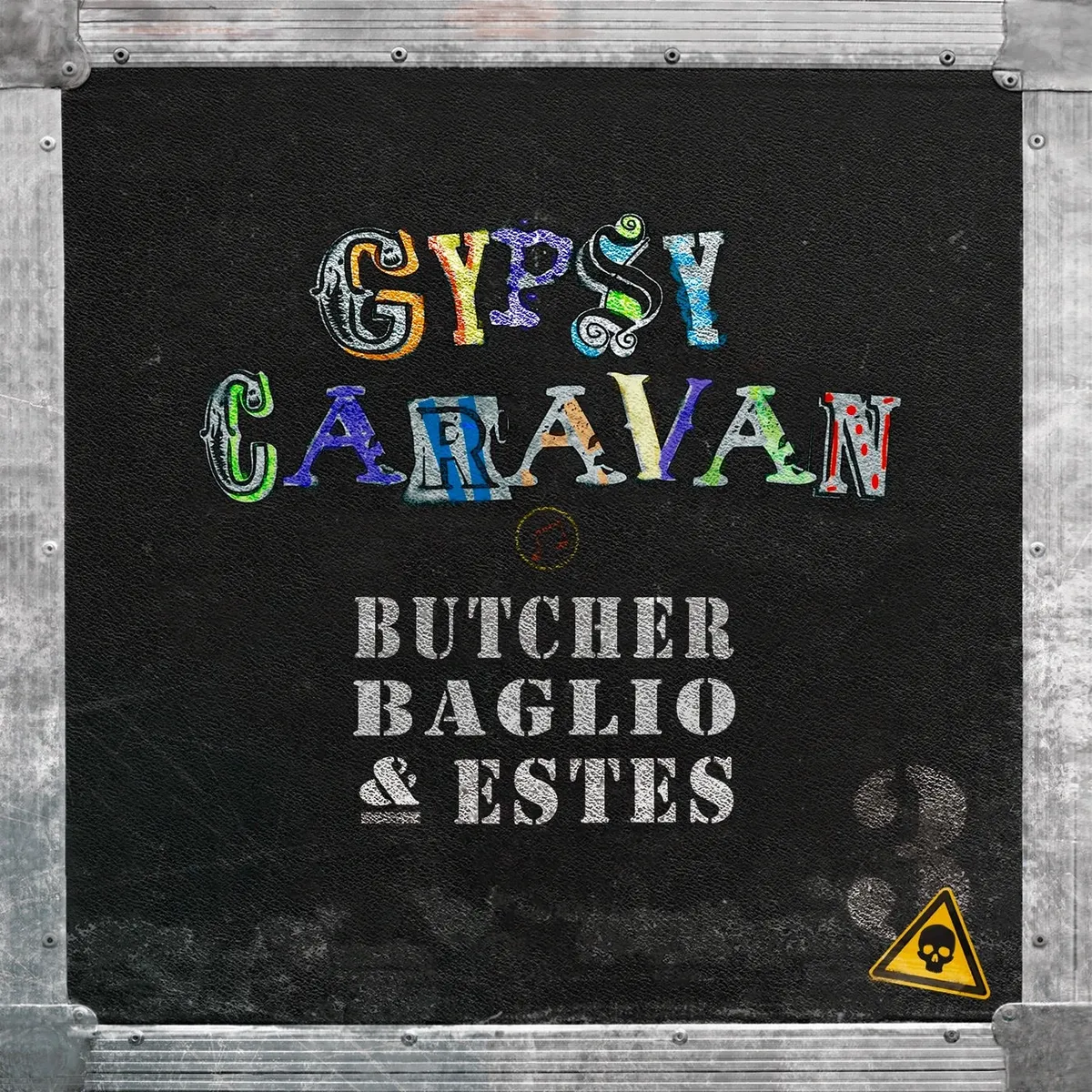
11. Butcher, Baglio & Estes: Gypsy Caravan. Electric Factory Music. Gypsy Caravan is what you get when seasoned, world-savvy musicians come together and share their collective instinctual talents in the power trio format — an amalgamative mixture of rock, blues, soul, folk, funk, and just all-out kick-ass performance chops, note after note after note. Just dig the way the Boston-based guitarist/vocalist troika of Jon Butcher, Sal Baglio, and Allen Estes all come together, from the start of the analog-leaning rotation of the gritty album opener “Long Player” to the Stonesy, no-matter-what positivity of “Sunny Day” to the acoustified sentiments of “Angel Rider” to the snarl, chug ‘n’ stomp of “Railroad Line Revisited,” the latter track sharing a direct train-track lineage with a song by one of Butcher’s earlier bands, Barefoot Servants. “I want people to get the same feeling we had while we were playing it,” Butcher told me back in August. “In the face of so much negativity in the world, making music like this with my friends is truly special, because it’s so warm, and so welcoming. The theme of the record is meant to share that level of energy. Some of the songs are fun, but they’re all meant to give you a feeling. If that wish is fulfilled, then my purpose on earth has not been for naught.” Mission accomplished, I’d say. The merry BBE Gypsy Caravan is on its way, and you best climb aboard.
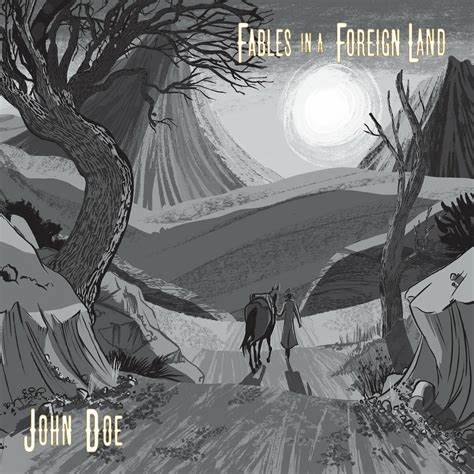
10. John Doe: Fables in a Foreign Land. Fat Possum. The once and forever X co-founder/punk-icon songwriter John Doe continues to fuel his long-entrenched side hustle (to use modern parlance) as an acclaimed solo artist, wherein he mines the deepest of the deep-seated roots of American music tenets to forge bold new alt-country/folk standards of his own making. Fables in a Foreign Land is a striking reminder of just how on-point Doe and his folk trio can be, just by recording in the same room live and choosing not to deploy any edits or overdubs. “We all sat there together, looking at each other. There were no headphones, and there were just a bunch of mics — and a ton of bleeds,” Doe told me back in May. “I like records where I can feel the juice and feel the messiness, so we just had to get down to it and make sure we played ’em real good.” (Full interview coming soon.) From the sinister kick of “Destroying Angels” (co-written with Shirley Manson of Garbage) to the twisted Mexican balada de hėroe shuffle of “El Romance-O” (co-written with Louie Pérez of Los Lobos, who provided his lyrical contributions in Spanish) to the relentless diesel-and-dust thrust of “Travelin’ So Hard,” Doe’s dustbowl drive has rarely been stronger. Few people can make an album about the isolation and loneliness of a previous century sound so appealing, but John Doe has clearly made a name for himself writing and performing Fables that will continue to resonate long after we’re all gone from this plane.
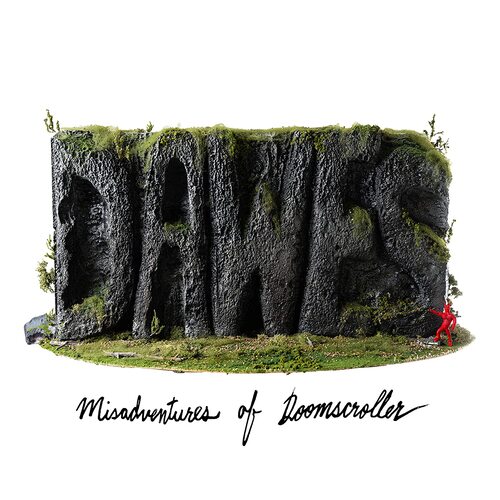
9. Dawes: Misadventures of Doomscroller. Rounder. Just like fine wine does (or so I’m told), there are certain songwriters who keep getting better and better with age. Dawes frontman Taylor Goldsmith is a textbook example of that tenet, with the proof being all 46 minutes of the four-man L.A. band’s latest LP installment, Misadventures of Doomscroller. Here, Goldsmith doubles down on the visceral storytelling while, to a man, the ever-intuitive Dawes collective continues to click on all cylinders. From the gentle harmonic swells of “Comes in Waves” to the Allmansesque ramble-tamble of “Ghost in the Machine” to the ethereal buildup of all the fusiony, post-prog movements that permeate “Sound That No One Made,” each Doomscroller track unfolds like the next chapter in a book you never want to end. “I don’t mean to sound like I’m trying to compare ourselves to some post-modern author or something,” Goldsmith told me back in August, “but I find that when I’m reading a book, if it’s a little longer and denser than other books but it’s still compelling and I want to stick with it, I’m rewarded by that challenge.” (Full interview coming soon.) Continued Goldsmith, “Some fans may not like longer songs of ours like ‘Everything Is Permanent,’ but that’s ok. I think the people who stick with it are gonna like it maybe a little more than they would have if it was just a four-minute ditty. They’re gonna be like, ‘Wow, I really went on a journey here,’ or ‘This song really didn’t let up. It had more to say, and now I have more to chew on.’ So, I’m hoping the people who do like it are gonna like it even a little more than they would have otherwise.” Couldn’t say it any better myself. Every Dawes Misadventure that comprises this fine sonic tome continues to reap rewards quite handily upon repeat listenings.

8. Julian Taylor: Beyond the Reservoir. Howling Turtle. How do you follow-up a career high point? If you’re Julian Taylor — the Toronto-based singer/songwriter who garnered widespread acclaim for his intimate June 2020 solo album The Ridge — you up your game by striving to exceed the creative fruits that already blossomed from the artistic spark that got you there in the first place. To that end, Taylor has surpassed expectations quite handily with the nine profoundly interpersonal songs found on his latest effort, Beyond the Reservoir. Thanks to songs like the starkly restless narrative of “Murder 13” and the no-holds-barred reclamation declarations of “Stolen Lands” — not to mention the resilient backbone at the taproot of “Seeds” and the magnanimous firmament of freedom and wisdom celebrated in “I Am a Tree” — the sheer breadth of Reservoir finds Taylor planting a stake for taking his rightful place as one of our most insightful and personally affecting songwriters and performers. “I want people to find that my songwriting has an infinite sadness to it — and also an infinite hope,” Taylor told me back in May. “I want my listeners to first and foremost hear an artist who took his craft extremely seriously in how he harnessed the melody and the rhythm, as well as how the arrangements, the writing of the songs, and the way the chords are all pulled together. Ultimately, I hope my work helps people relate to their own humanity.” As bleak as some of the channels certain Reservoir songs must travel, the joys found within the down-home transformative stretch of “Moonlight” and the forward-looking reverie of embracing one’s ingrained familial experiences in “Wide Awake” only serve to add to the album’s widescreen look at the world sprawl that’s around us. The inherent compassion and humanity entrenched all throughout Beyond the Reservoir clearly show Taylor is well in tune with the soul of his restless muse in a way that’s personally relatable to everyone who’s listening.
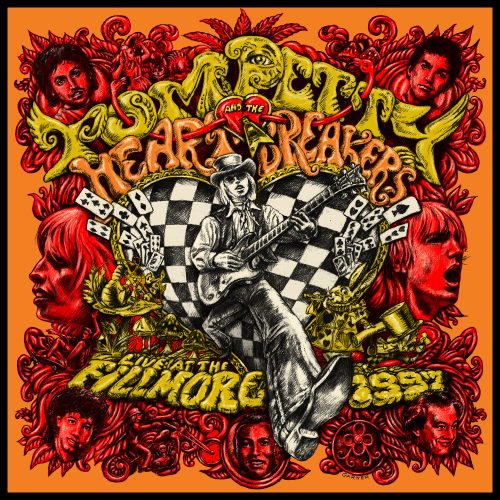
7. Tom Petty & The Heartbreakers: Live at the Fillmore – 1997. Warner Records. As good as Tom Petty & The Heartbreakers were as a creative collective in the studio across their five decades of recording together, they may very well have been an even better band onstage. In fact, one might argue TP&THB were among the best and most versatile American live bands of the rock era, period. The proof of such a claim can be found all across a massive — and massively rewarding — 4CD/6LP box set, Live at the Fillmore – 1997, which is comprised of 58 tracks (35 of them being covers!) culled from the band’s seminal 20-night stand at one of San Francisco’s most storied venues. Petty himself often expressed how that particular Fillmore run was a pinnacle point of the band’s live performance arc, and it’s hard to argue with the breadth of group interactivity found within songs like the razor-sharp covers of J. J. Cale’s “Call Me the Breeze,” Bill Withers’ “Ain’t No Sunshine,” and The Byrds’ “Eight Miles High,” plus Petty originals like the deep cut “Cabin Down Below,” “Free Fallin’,” and “It’s Good to Be King” (to name but a few). “What I love about the Fillmore residency is it was a communal experience of music nerds — some of them were onstage, and the rest were in the audience,” Petty’s longtime engineer and production partner Ryan Ulyate told me back in November. (Full interview coming soon.) “The one thing they all had in common was they all loved music — and they loved all these songs too. It was just a joy for Tom and The Heartbreakers to be unleashed to the point where they could play all the stuff they wanted to play, their way. That love of music is really what comes across on this live album.” Indeed, the contents of this endlessly enjoyable box set prove again and again why Tom Petty & The Heartbreakers were not only dubbed “The Filmore House Band” during/after this historic live run, but also why they will forever remain known as being an American band for the ages.
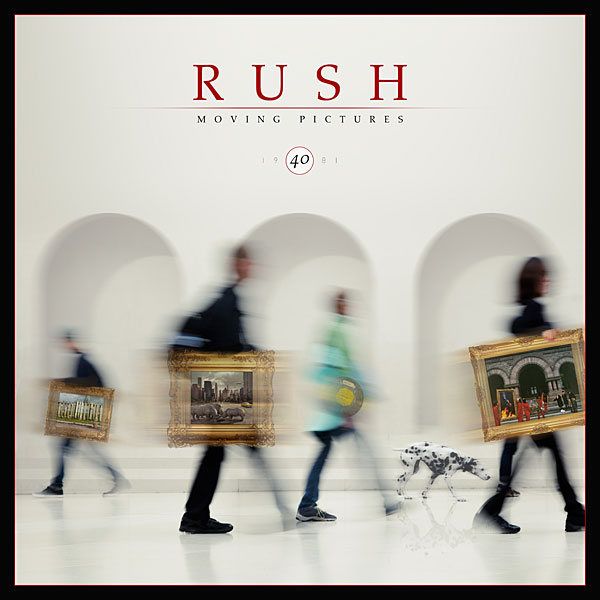
6. Rush: Moving Pictures – 40th Anniversary Super Deluxe Edition. Anthem/Mercury/UMe. What’s my all-time No. 1 favorite album, you ask? The answer is easy — it’s Rush’s eighth studio effort, February 1981’s landmark Moving Pictures. The seven instantly identifiable and equally individual songs comprising Moving Pictures’ 40 seamless minutes are songs I never, ever tire of hearing. And now, here in 2022, my favorite album got even more favoriter, er, better, thanks to a 3CD/1BD/5LP 40th anniversary Super Deluxe Edition that includes a truly stunning Dolby Atmos mix as well as previously unreleased and newly restored bonus live content newly mixed from the original analog live multitracks by the original album’s producer, Terry Brown. “Moving Pictures doesn’t seem to have aged,” Brown told me in April. “It still sounds as fresh as it did when we finished it. It’s a combination of great tunes, great performances, and that magical chemistry of three guys [bassist/vocalist/keyboardist Geddy Lee, guitarist Alex Lifeson, and drummer Neil Peart] who loved to play.” Not only that, but the included Blu-ray contains the aforementioned benchmark-setting version of the core album in 24-bit48kHz Dolby Atmos, newly mixed from the original multitracks by longtime Rush associate and noted producer/engineer Richard Chycki. “We have the added axis of true height, and there are now so many more options for where to place audio,” Chycki told me back in April. “So many things come out that were in the mix originally — elements now unmasked that we used to have to try to decipher coming at us from only two speakers. Overall, the listener is going to get an increased sense of engagement when listening to Moving Pictures in Atmos.” Frankly, I could list all seven tracks as prime examples, but my favorite Atmos moments dominate the three cuts originally on Side 2 of the original LP: “The Camera Eye,” “Witch Hunt,” and most especially “Vital Signs.” The bottom line is, Rush’s unbending, mutually triangulated respect ultimately translated into a body of work that by its very definition, elevated the norm. And when you revisit Moving Pictures, especially in Atmos, you hear exactly how Lee, Lifeson, and Peart captured the true spirit of collaboration. Not content to be a trio comprised merely of players, performers, and portrayers, the harmonic convergence at the heart of all Rush music ensures the legacy of Moving Pictures will last long outside the gilded cage.
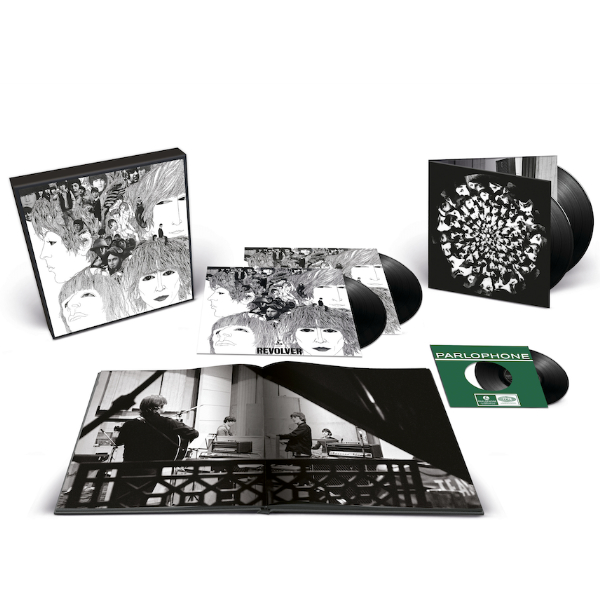
5. The Beatles: Revolver Super Deluxe Edition. Apple Corps Ltd./Capitol/UMe. Let’s get right to it — The Beatles’ Revolver further solidified the creative validity of the rock album format when it was released in August 1966. From “Taxman” to “Tomorrow Never Knows” and all Fab Four points in between, Revolver set the template for an artform we practically take for granted over a half-century later in our modern, on-demand digital world. The Revolver Super Deluxe Edition — available in either 4LP/1EP or 5CD form — further solidifies the album’s pedigree. (And, before you ask — yes, I have both versions.) It’s worth qualifying the stats of how this box set is comprised. Revolver’s core 14 tracks were newly mixed by producer Giles Martin and engineer Sam Okell in stereo, and the album’s original mono mix is sourced from its 1966 mono master tape. The album’s new stereo mix is sourced directly from the original four-track master tapes. The Super Deluxe collection also features Revolver’s original mono mix, 28 early takes from the recording sessions, three home demos, and a four-track EP with new stereo mixes and remastered original mono mixes. De-mixing technology that was developed by the sound team at Peter Jackson’s WingNut Films Productions Ltd — first put to expert use in the 2021 Beatles documentary, Get Back — has been duly deployed here, most effectively for Martin’s Dolby Atmos mix of Revolver that’s currently only available digitally (but should undoubtedly be made available on Blu-ray whenever this box set is revised). And the Atmos mix is where it’s really at, with “Taxman” leading the 360-degree charge. “You had what was essentially a mono track with guitar, bass, and drums all together, and it could now be more like stereo,” Giles Martin told me back in September. “Meaning, I could now put the drums in the middle and have the bass on one side and guitar on the other side, to a certain extent. That actually gives you more impact, because you’re not tucking the whole band on one side.” Turn off your mind, relax, and drop the needle and/or float into the Atmosland stream. In its Super Deluxe form, Revolver is the toppermost there is.
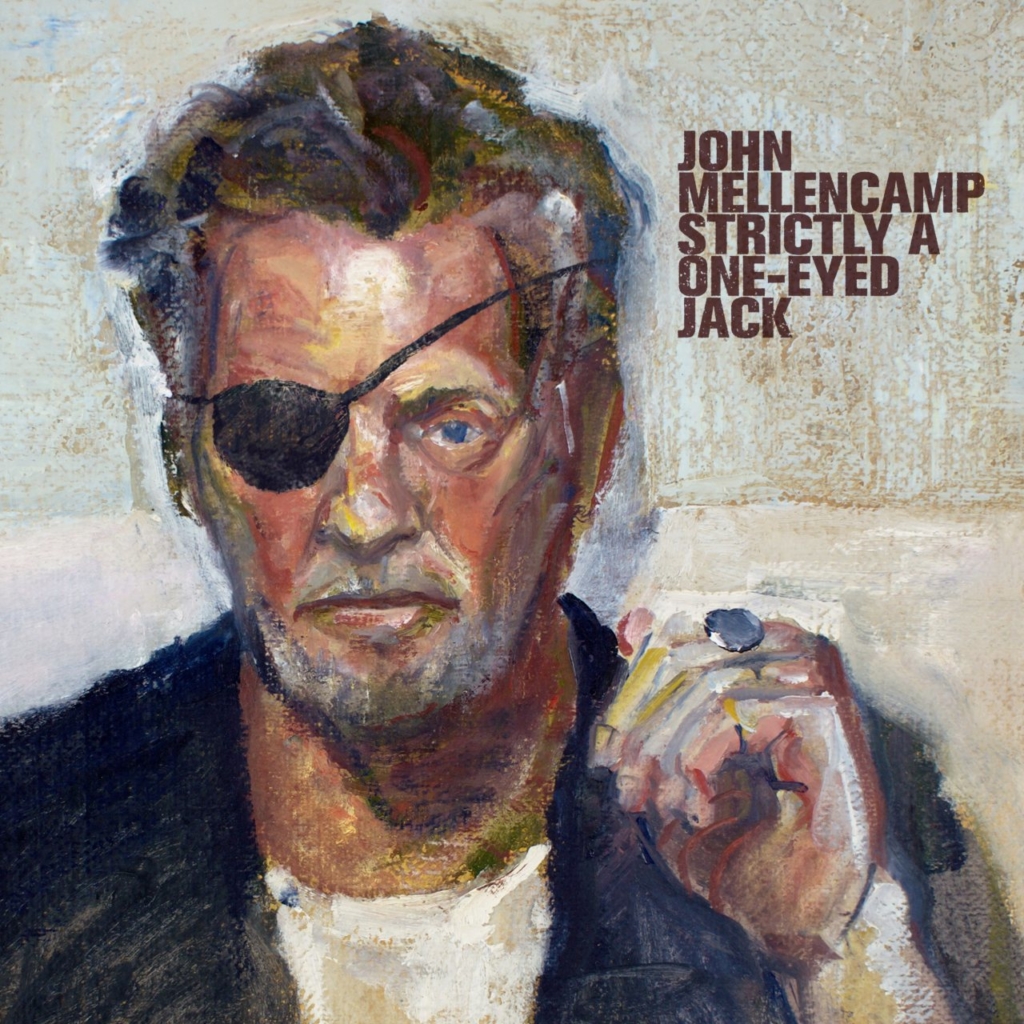
4. John Mellencamp: Strictly a One-Eyed Jack. Republic. Somewhere around the turn of the century, upstart Midwestern singer/songwriter John Mellencamp entered his “just don’t give a bleep” phase, and the ensuing thrust of his artistic output since then wholly reflects that unbridled philosophy. The once and forever Little Bastard — a long-entrenched nickname dutifully applied as his nom de producer — doubles down on that grizzled folk-rock veteran persona on his 24th studio album, Strictly a One-Eyed Jack, duly cut in the familiar confines of his own backyard Bloomington Mall Studios in Indiana. Sung entirely from one character’s seen-it-all POV, One-Eyed Jack (hmm, perhaps it was Diane who claimed that other pupil?) finds Mellencamp deploying a Dylanized, throaty twilight-years rasp to great, growly effect. Snail-paced opener “I Always Lie to Strangers” sets the tone and tempo with a measured marriage of acoustic guitar strumming and thoughtful piano and violin accompaniment. Bruce Springsteen collaborates on a trio of tracks, in turn trading lead vocals on the lost-time lamentations of “Wasted Days,” serving up counter vocals on the twangy “Did You Say Such a Thing,” and squeezing out gnarled guitar stabs on “A Life Full of Rain.” Though a slow train may be coming for us all, Mellencamp is gonna ride his strictly to the end of the line, Jack.
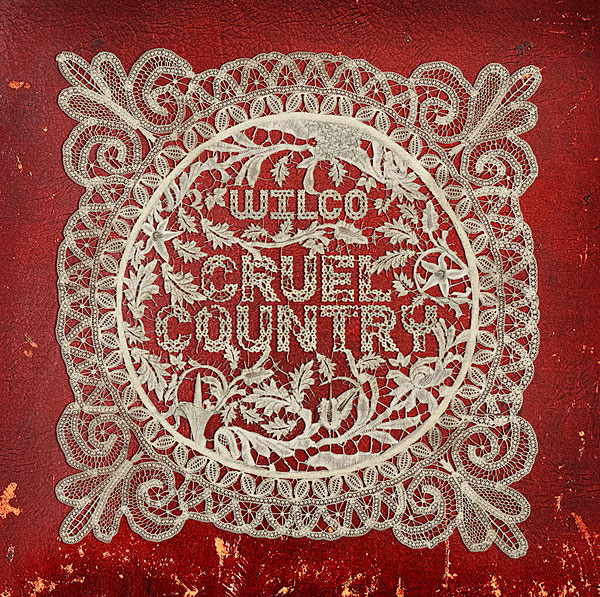
3. Wilco: Cruel Country. dBpm. Wilco’s music has often mirrored a patchwork quilt delineating the scope and potential of American music for the balance of its almost 30 years of existence, and Cruel Country is the apex of just how masterfully the band has been able to express those lofty aspirations. Guitarist/vocalist Jeff Tweedy and company have ensured all 77 minutes of Cruel Country reflect the best American music has to offer. More than one extended jam sequence portends well for how these Country songs will be expanded upon in a live setting. Witness the intertwined noodling embedded in the middle of the insistent “Birds Without a Tail / Base of My Skull” and the final two-minutes-plus of “Many Worlds,” which slow-builds its drama to a rightful fadeaway crescendo. The ironically dubbed but wholly palate-cleansing “Falling Apart (Right Now)” is a purebred midnight rockabilly special, while “A Lifetime to Find” features a fully earned dobro solo from Nels Cline. The bleakness of the album closer “The Plains” accentuates the inherently cruel nature of the modern domestic society the album title references, replete with a constant rush of wind — perhaps meant to signify rolling tumbleweeds — swirling all around the band. “I think those takes and those performances made for a record that felt really urgent,” Tweedy told me in May. “They all sounded like the definitive version of the songs at the moment. They’re the takes we wanted to hear again, and the ones we felt really good about. Hopefully, the songs are sturdy enough to be performed at slightly different tempos or have different sections get stretched out.” An epic treatise on American history both good and grim, Cruel Country offers a cavalcade of spot-on homegrown sounds captured live in the studio, all nice and cocoon-like. The six country gentlemen comprising Wilco have affixed their collective wavelengths onto chronicling the sonic threads of an at-risk American fabric in such a way that can’t help but make their mamas proud.
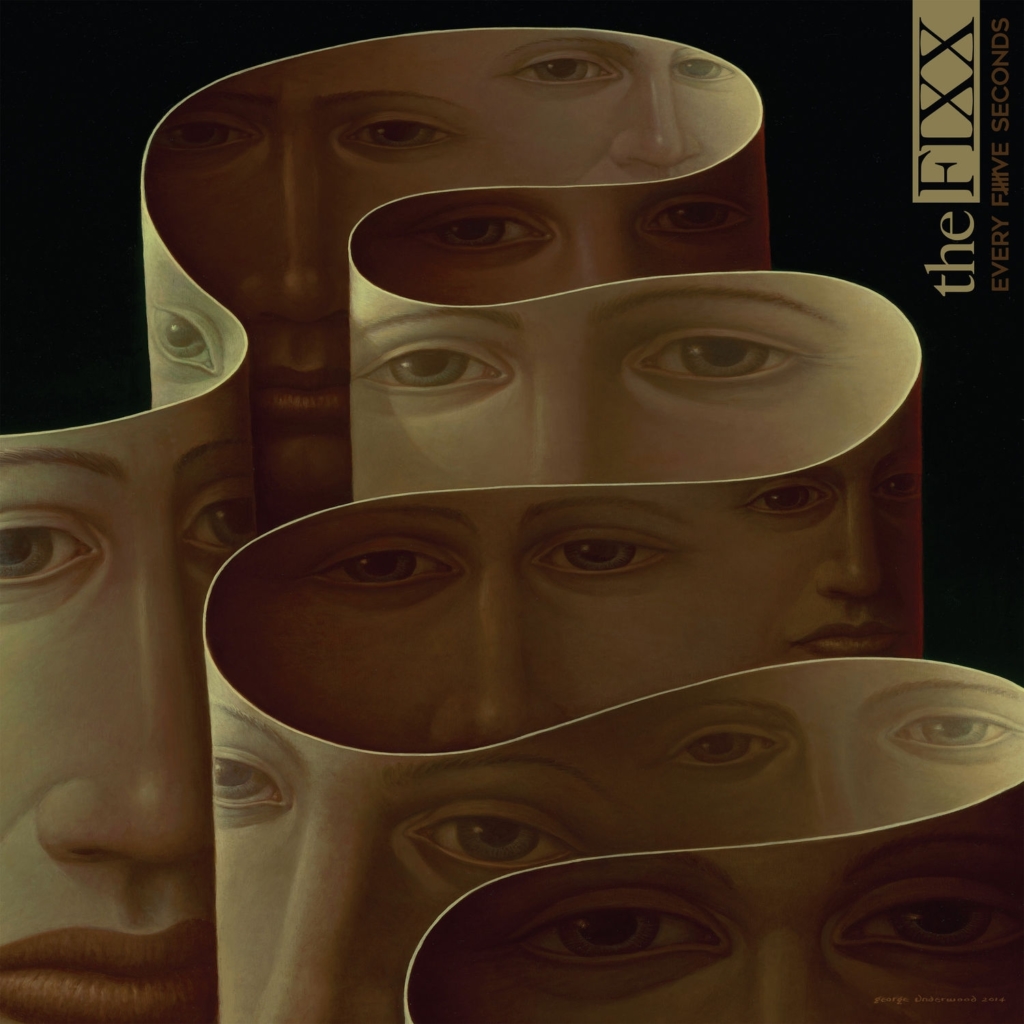
2. The Fixx: Every Five Seconds. BFD/The Orchard. The Fixx are true survivors. They’ve been able to transcend new-wave-era labeling by consistently building on an enduring sound palette that stretches well past the confines of one thing leading to another redux. The Fixx’s 11th studio album, Every Five Seconds, is as vibrant as anything they’ve ever done, reaching beyond the soundscape buoys where vocalist/lyricist Cy Curnin’s ever-wary birdseye worldview resides. Longtime producer Stephen W Tayler, whose lineage runs through the tenets of early Fixx production ace Rupert Hine, threads the needle between the band’s macrocosmic aspirations and their microgroove realities. The clarion call of “Wake Up” finds verses comprised of guitarist Jamie West-Oram’s bent notes warbling on the brink of collapse, drummer Adam Woods’ restrained rim-tapping and cymbal work, and the inherent dark-wave tension within Curnin’s foreboding vocals ultimately all giving way to almost contradictory arena-aspirational choruses. The semi-detached nature of “Cold” benefits from Rupert Greenall’s brooding keyboards and piano lines embodying the sound of a soulless wind blowing off the tundra, while the kinetic, angular rush of the self-analytical, positivity-seeking “Spell” contains a few somewhat clandestine progressive rock elements. “I always try to find a way of being philosophical for the five of us, and then put a statement forward that would make the music sound like I wanted it to sound to go with those words,” Curnin told me back in March. “It comes from a universal process that’s humble yet confident at the same time. It’s really about listening whilst you’re making a noise — like listening and talking at the same time, like an exchange going on within the machine. I also think it’s like one of those Escher staircases — you keep looking at it, and it just keeps taking you up, and up, and up. You can’t quite see the beginning, and you can’t quite see the end.” The Fixx are in no way a band content with chasing the phantoms of past glories or accumulated accolades, and Every Five Seconds is everything one could hope for from a veteran act with a never-ending future still very much ahead of them.

1. Porcupine Tree: Closure / Continuation. Music for Nations/Megaforce. Listening to Closure / Continuation, Porcupine Tree’s first album of all-new music in over 12½ years, by way of its unabashedly mind-boggling Dolby Atmos mix — a mix courtesy Steven Wilson, the band’s leading force and the unchallenged king of 360-degree music-making and music-mixing — one can’t help but marvel at how this still-growing format now has an official milestone mix showcasing everything it can be, and more. “I wanted to make it an incredibly three-dimensional experience for the listeners,” Wilson confirmed to me back in May. “But the one thing I felt very strongly about is there would be absolutely no point for Porcupine Tree coming back with another record that just felt like more of the same.” With that statement, Wilson has succinctly described exactly what he’s realized in Atmos for all 48 minutes of the seven songs that comprise Closure / Continuation (or C/C, for short). This quantum aural leap beyond the outer limits of the immersive audio stratosphere is no surprise, really, given the abject power inherent in the Atmos mix of C/C’s opening 8-minute opus, “Harridan,” which features dramatic volume swells, hard-hitting proto-metal sequences, strategic falsetto, and a free-form, slow-burn noodling section. In essence, “Harridan” encapsulates the full promise of what Porcupine Tree fans have come to expect over the years — and beyond. The other C/C cuts that fill out the track listing — the deceptively gentle approach to “Of the New Day,” the disapproving eye of “Rats Return,” the Mellotron melodrama of “Dignity,” the vengeful snarl of “Herd Culling,” and the keyboard-wash showcase “Walk the Plank,” all buttress the intuitive interplay between guitarist/vocalist Wilson, drummer Gavin Harrison, and keyboardist Richard Barbieri. “I don’t think I’ve ever made a record you can just throw on in the background and not engage with it,” Wilson assessed. (He’s 100 percent correct, btw.) For his part, Harrison cites the album’s final track, the ultimately explosive “Chimera’s Wreck,” as the breakthrough that unlocked everything. “That’s the real epic,” he affirmed to me back in May. “We made waves with the shifting tempos, to the point where the lyrics would just fall over these crests.” And, as Barbieri noted to me back in May, “When I come in, I’m not there to jam — I concentrate more on adding the atmospheric and textural side of things. I think what I give to Steven and Gavin to work with lends itself to this immersive sound palette of ours.” Given the sheer breadth of the music created herein by the indefatigable Wilson/Harrison/Barbieri axis, what you hear when you cue up Closure / Continuation — whether it be in Atmos, or in stereo — is the very definition of immersive audio.
